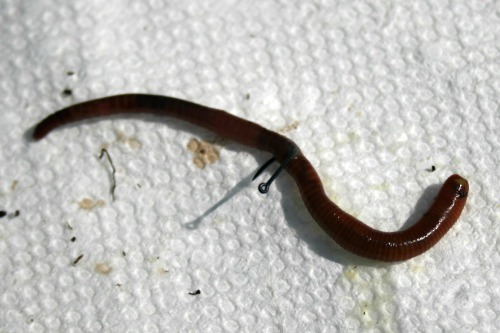Lake Hickory Bait: Providing High-Quality Bait for Anglers Everywhere
Lake Hickory Bait: Providing High-Quality Bait for Anglers Everywhere
Blog Article
Red Wigglers: The Unsung Heroes of Organic Waste Recycling
Red wigglers, or Eisenia fetida, serve as critical agents in the natural waste reusing procedure, changing thrown out materials right into beneficial vermicompost. As the globe increasingly seeks remedies to battle waste accumulation and boost farming performance, understanding the function of these worms comes to be essential.
What Are Red Wigglers?
The amazing resilience of red wigglers, medically called Eisenia fetida, emphasizes their vital role in organic waste recycling. These little, reddish-brown earthworms are commonly found in disintegrating natural issue, such as compost heap and manure lots. Lake Hickory Bait. Unlike other earthworm species, red wigglers prosper in nutrient-rich settings and are extremely reliable at damaging down organic products, making them crucial for vermicomposting

(Lake Rhodhiss Bait)Along with their function in waste reduction, red wigglers add to soil health and wellness by enhancing soil framework and oygenation via their delving tasks (Lake Hickory Bait). Their presence in composting systems not just enhances decomposition prices however also advertises a sustainable strategy to throw away management, illustrating their significance in environmental preservation initiatives
Benefits of Composting With Worms
Composting with worms, specifically red wigglers, offers countless advantages that enhance both waste monitoring and dirt health. These worms effectively damage down natural waste, converting it into nutrient-rich vermicompost that enhances dirt. This process accelerates decomposition, allowing for a quicker recycling of kitchen scraps and various other organic materials contrasted to standard composting approaches.
Furthermore, the vermicompost generated by red wigglers is including advantageous microorganisms, which aid enhance soil framework, aeration, and moisture retention. This improves the general wellness of plants, advertising energetic growth and increased returns in gardens and farming setups. The use of worms in composting lessens the manufacturing of greenhouse gases, such as methane, contributing to an extra sustainable waste management system.

How to Start Vermicomposting
Developing a vermicomposting system is a straightforward procedure that can generate significant advantages for both waste management and dirt enrichment. To start, select a suitable container, such as a plastic bin or wooden box, with appropriate air flow openings to make sure correct air flow. The dimensions should ideally be about 2 feet by 3 feet, allowing enough area for the worms to thrive.
Following, prepare bed linens material, which can include shredded newspaper, cardboard, or coconut coir. This bedding ought to be moistened to develop an appropriate habitat for the worms. As soon as the bed linen is in place, introduce red wigglers (Eisenia fetida) right into the container, generally around one extra pound of worms for every single square foot of area.
Adhering to the placement of worms, include organic waste, such as fruit and veggie scraps, coffee grounds, and crushed eggshells. With these actions, you will effectively launch a vermicomposting system that adds to lasting waste management and improves your soil.
Maintaining a Healthy Worm Bin
(Lake Rhodhiss Bait)Keeping a worm container growing requires routine focus and like guarantee the health of the red wigglers and the performance of the composting process. Correct upkeep starts with keeping track of the moisture degrees; the container must perspire but not waterlogged. A good guideline is to maintain an uniformity similar to a wrung-out sponge.
Oygenation is crucial also. Delicately blending the bedding and food scraps every few weeks avoids compaction and guarantees that all worms have access to oxygen. Furthermore, it is essential to feed the worms suitably. A well balanced diet of fruit and veggie scraps, coffee premises, and crushed eggshells ought to be provided in small amounts to prevent overfeeding, which can lead to smells and insects.
Temperature guideline is an additional vital facet. Red wigglers prosper in a variety why not find out more of 55 to 77 degrees Fahrenheit. If the container ends up being as well hot or cold, the worms might come to be stressed - Lake Hickory Bait. Last but not least, occasionally look for indicators of health and wellness, such as worm populace growth and the visibility of healthy castings. By faithfully taking care of these elements, one can maintain a robust and effective worm bin.
Effect On Lasting Living
The effective maintenance of a worm container not only benefits the wellness of red wigglers however additionally adds considerably to sustainable living practices. By reusing organic waste, such as cooking area scraps and lawn debris, red wigglers assist draw away significant quantities of product from land fills. This reduction in waste not only lowers greenhouse gas emissions yet also decreases the ecological burden connected with waste monitoring.
Additionally, the spreadings generated by red wigglers offer as a nutrient-rich natural fertilizer, boosting soil health and promoting plant development. This all-natural choice to chemical fertilizers sustains lasting farming and horticulture techniques, lowering reliance on artificial inputs that can harm environments. Additionally, worm composting cultivates awareness of waste monitoring, encouraging individuals and neighborhoods to embrace more lasting habits.

Verdict
In recap, red wigglers act as important contributors to organic waste recycling with their efficient disintegration of natural materials. Their capacity to generate nutrient-rich vermicompost improves dirt health and sustains lasting farming practices. By incorporating vermicomposting into waste monitoring strategies, individuals and neighborhoods can considerably reduce waste while advertising ecological sustainability. The role of Eisenia fetida in cultivating healthy and balanced ecosystems underscores the significance of these microorganisms in accomplishing sustainable living and improving soil fertility.
Report this page